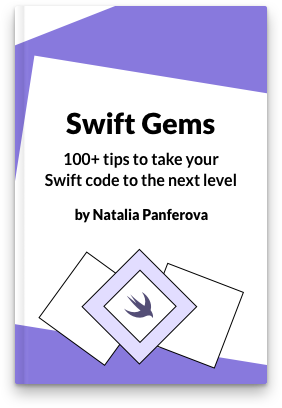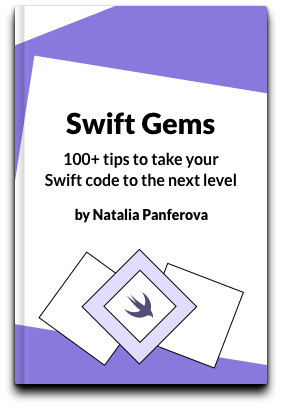Build a realtime social network using Django Channels
This post follows on from our previous posts on Django Channels Rest framework. Here we will look at how to build a WebSocket server for a realtime social network with the ability for users to subscribe to posts by hashtag.
While this example will focus on a social network, it should be easy to adapt it to any multicast subscription/observation situation. We assume you are familiar with some of the basics of Django Channels, see this tutorial on Django Channels to get up-to-speed on building a simple chat application.
# Post model
For our social network we are going to need a DB model to represent each Post.
from django.db import models
class Post(models.Model):
created_at = models.DateTimeField(auto_now_add=True)
author = models.ForeignKey(
settings.AUTH_USER_MODEL,
on_delete=models.CASCADE,
blank=False,
)
body = models.CharField(
max_length=256,
blank=False
)
# WebSocket consumer
For each open WebSocket connection Django Channels will create an instance of this consumer class.
class LivePostConsumer(
ListModelMixin,
RetrieveModelMixin,
CreateModelMixin,
PatchModelMixin,
DeleteModelMixin,
GenericAsyncAPIConsumer
):
queryset = models.Post.objects.all()
serializer_class = serializers.PostSerializer
permission_classes = (IsAuthenticatedForWrite,)
def filter_queryset(self, queryset: QuerySet, **kwargs):
queryset = super().filter_queryset(queryset=queryset, **kwargs)
# we need to ensure that only the author can edit their posts.
if kwargs.get('action') == 'list':
filter = kwargs.get("body_contains", None)
if filter:
queryset = queryset.filter(body__icontains=filter)
# users can list the latest 500 posts
return queryset.order_by('-created_at')[:500]
if kwargs.get('action') == 'retrieve':
return queryset
# for other actions we can only expose the posts created by this user.
return queryset.filter(author=self.scope.get("user"))
We are using a custom permission_class that limits users to list and retrieve actions if they are not logged in.
class IsAuthenticatedForWrite(IsAuthenticated):
async def has_permission(
self, scope: Dict[str, Any],
consumer: AsyncConsumer,
action: str,
**kwargs
) -> bool:
if action in ('list', 'retrieve'):
return True
return await super().has_permission(
scope,
consumer,
action,
**kwargs
)
To ensure we extract the users information from their Django session we can use AuthMiddlewareStack provided by Django Channels.
application = ProtocolTypeRouter({
"websocket": AuthMiddlewareStack(
URLRouter([
url(r"^ws/$", consumers.LivePostConsumer),
])
),
})
We also need to write a PostSerializer, you can use a ModelSerializer from DRF.
class PostSerializer(ModelSerializer):
class Meta:
model = Post
fields = ['created_at', 'author', 'body', 'pk']
read_only_fields = ['author', 'created_at', 'pk']
def create(self, validated_data):
validated_data['author'] = self.context.get('scope').get('user')
return super().create(validated_data)
# Use WebSocket consumer from your client
The LivePostConsumer will expose a few actions to your frontend client that we can use by sending JSON messages over the WebSocket connection.
To request a list of the latest posts on our network we send a JSON message:
{
"action": "list", "request_id": 42
}
The consumer will send a message back over the WebSocket:
{
"action": "list",
"errors": [],
"response_status": 200,
"request_id": 42,
"data": [
{
"author": 4,
"body": "Check out this new framework... #Django #Python",
"created_at": "2020-05-31T00:46:33+00:00",
"pk": 2
},
{
"author": 23,
"body": "It has been a long day, #BeerTime",
"created_at": "2020-05-30T00:46:33+00:00",
"pk": 1
}
]
}
If you look at the above filter_queryset method you will see we have added an option to filter posts.
{
"action": "list",
"request_id": 92,
"body_contains": "python"
}
Check out our article Expose Django REST-like API over a WebSocket Connection that explains how to use this consumer to retrieve, create, patch and delete posts.
# Subscribe to a hashtag
As part of our social network we would like it to be possible for a user to see live updates to a trending story by subscribing to a hashtag.
To do this we will add some additional methods to our LivePostConsumer.
class LivePostConsumer(...):
# .. the above filter_queryset goes here
@model_observer(models.Post)
async def post_change_handler(self, message, observer=None, **kwargs):
# called when a subscribed item changes
await self.send_json(message)
@post_change_handler.groups_for_signal
def post_change_handler(self, instance: models.Post, **kwargs):
# DO NOT DO DATABASE QURIES HERE
# This is called very often through the lifecycle of every instance of a Post model
for hashtag in re.findall(r"#[a-z0-9]+", instance.body.lower()):
yield f'-hashtag-{hashtag}'
@post_change_handler.groups_for_consumer
def post_change_handler(self, hashtag=None, list=False, **kwargs):
# This is called when you subscribe/unsubscribe
if hashtag is not None:
yield f'-hashtag-#{hashtag}'
@action()
async def subscribe_to_hashtag(self, hashtag, **kwargs):
await self.post_change_handler.subscribe(
hashtag=hashtag
)
return {}, 201
@action()
async def unsubscribe_from_hashtag(self, hashtag, **kwargs):
await self.post_change_handler.unsubscribe(
hashtag=hashtag
)
return {}, 204
To subscribe to a hashtag send the following message:
{
"action": "subscribe_to_hashtag",
"request_id": 102,
"hashtag": "python"
}
To unsubscribe from a hashtag send:
{
"action": "unsubscribe_from_hashtag",
"request_id": 103,
"hashtag": "python"
}
When we are subscribed to a hashtag and a new Post is created that includes this hashtag we will receive a message like this:
{"action": "create", "pk": 23}
DCRF will send these events when a Post is created, updated or deleted. All operations that use the Django ORM will result in these events being sent to the subscribed users. This includes updating models in the Django Admin interface or using Django commands.
Note if an item is updated so that it no longer contains a subscribed hashtag the subscribed user will get a delete message sent to them. As the Post is no longer in the group for the hashtag that they subscribed to.
# Improve the message we send to our ws clients
When we are informed of a created/updated Post we need to display this info to the user, so that we don't need to send a retrieve request, we include the Post body directly in the message.
class LivePostConsumer(...):
# .. the above methods go here
@post_change_handler.serializer
def post_change_handler(self, instance: models.Post, action, **kwargs):
if action == 'delete':
return {"pk": instance.pk}
return {
"pk": instance.pk,
"data": {"body": instance.body}
}
With this change in place when a Post is created/updated the message will include the body value directly.
{
"action": "create",
"pk": 23,
"data": {"body": "Hello there...#NewDay"}
}
The full source code for this project can be found in Django Channels Example Social Network repository on GitHub.



